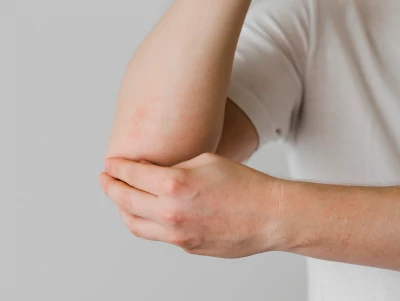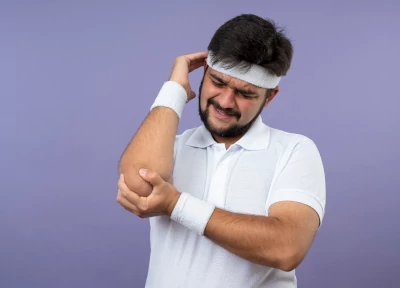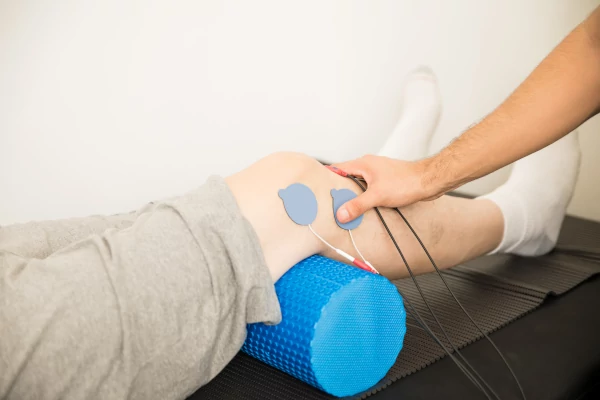Golfer’s elbow, also known as medial epicondylitis, is a painful condition that affects the tendons and muscles of the forearm that attach to the bony bump on the inside of the elbow. Despite its name, golfer’s elbow can affect anyone who performs repetitive gripping or wrist flexion motions, not just golfers.

Symptoms of Golfer’s Elbow
The primary symptom of golfer’s elbow is pain and tenderness on the inside of the elbow, which may radiate down the forearm. The pain is often worsened when gripping or twisting objects and may be accompanied by weakness in the forearm and difficulty flexing the wrist.
Causes of Golfer’s Elbow
Golfer’s elbow is typically caused by overuse of the wrist flexor muscles and tendons, which can become inflamed or damaged. This can occur from a variety of activities, including golf, weightlifting, shoveling, and repetitive computer use.
Diagnosis of Golfer’s Elbow
A doctor can usually diagnose golfer’s elbow based on a physical exam and a discussion of the patient’s symptoms and medical history. Imaging tests, such as an X-ray or MRI, may be ordered to rule out other conditions.
Treatment of Golfer’s Elbow
The primary goal of treatment for golfer’s elbow is to reduce pain and inflammation, while also promoting healing and preventing further injury. Treatment options may include:
- Rest: The first step in treating golfer’s elbow is often to rest the affected arm and avoid any activities that may worsen the pain. This can help to reduce inflammation and allow the tendons to heal.
- Ice: Applying ice to the affected area can help to reduce pain and swelling. Ice can be applied for 15-20 minutes at a time, several times a day.
- Physical therapy: A physical therapist can help to develop a stretching and exercise program that can help to strengthen the forearm muscles and tendons, while also improving flexibility and reducing pain.
- Medications: Over-the-counter pain medications, such as ibuprofen or acetaminophen, may be recommended to help reduce pain and inflammation.
- Braces or splints: Wearing a brace or splint can help to immobilize the affected arm, which can help to reduce pain and promote healing.
- Corticosteroid injections: Corticosteroid injections are used to reduce the inflammation and pain associated with Golfer’s Elbow.
- Surgery: Medial epicondyle surgery is often used to treat this condition.
Prevention of Golfer’s Elbow
To prevent golfer’s elbow, it is important to take frequent breaks when performing repetitive activities that involve gripping or wrist flexion. It is also important to use proper technique and equipment when engaging in these activities, and to maintain good overall physical fitness.
Do you know about Tennis elbow? Check out our informative article to learn more!



